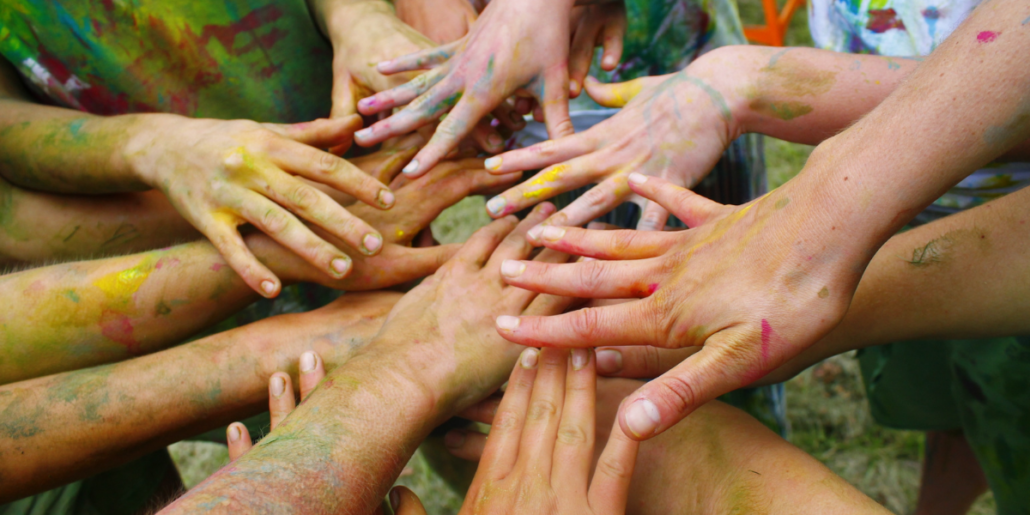By Valeria Traverso, Student Lab
As a storytelling post for Student Lab, you are going to experience the reading of my personal experience, feelings and thoughts while attending the workshop on Intentional Creativity in Mentoring. The aim of this post is to share my experience and the beauty of this workshop, that will hopefully enlighten and guide you, before the summit starts.
Enjoy your reading and get immersed in the feelings by combining arts and Mentoring!
“Intentional Creativity in Mentoring: Research & Practice” is a workshop hosted by Sarah Kremer and Erik Auerbach, from an organisation called First Exposure, based in San Francisco, California, USA.
This organisation leads and creates mentoring relationships for specific target groups, through the development of art in every form, individually and in groups. More specifically, Sarah and Erik started collaborating more than 10 years ago as Sarah is an art therapist and Erik, passionate photographer since he was child, has been involved in the very same mentoring programme for more than 17 years.
They were concerned by the low socio-economic conditions and their consequences on socially marginalised youth groups, like for example those living in the latin districts of San Francisco. First Exposure provides them a safe, free, creative space where the young can engage with older role models through creativity. Carefully identified and selected volunteer mentors are in fact eager to guide them, to create powerful and authentic connections with them.
And speaking of a mentoring programme, this all sounds very logic so far. So the interesting question is now, what characterises First Exposure and makes it the very unique case it is? The answer is easy: photography! Mentors at First Exposure deploys the art of giving life and representation to the youngsters’ creativity through pictures, exploring their inner self, and rebuilding their confidence and sense of empowerment through photography.
Sarah and Erik explained to us that professional art therapists and mentors hosting and organising weekly meetings make something much bigger that weekly meetings: by developing intentionally the creativity through art, by liberating this space for self expressions, they are the CATALYST FOR CHANGE. Because art can unify those boundaries and heal. And every young person involved in these activities becomes a catalyst for change themself. For both inner and external change.
Activities usually take place in small groups, but mentors also have individual time with mentees to explore themselves through artistic processes with a more mentee-centred approach. Striking is that it is thanks to the sense of community and belonging that these powerful and art-oriented activities are able to realise, mentees and also mentors who engaged with this programme are very likely to remain and commit to the organisations for many years. So many to see now some of the mentees who started at the very beginning of the programme now becoming mentors, who provide guidance and role modelling for the new generation of fellow young facing life experiences similar to what they had already not too long ago.
I wondered then, what makes marginalised young to show up on a weekly basis to First Exposure even when they have bigger fishes to fry at home? Because nobody is forced to be creative and make art, nor to be actively involved and fully committed at all times. It is all about giving a try, being there, participating and seeing how things would eventually go to follow their weekly need to decide how to spend their time in such a ‘safe space’.
The key for the connection between all of these people coming from different backgrounds is to always give them the choice, to just be themselves. They are allowed to watch, create, make art but also to not choose, to take time to look into themselves.
So to summarise, the two big take-aways from Sarah’s and Erik’s experience I have left the workshop with are the following.
Firstly, the combination of creativity and mentoring contributes to the rapport building. This means that the approach to art is a journey that connects people with their inner thoughts, emotions and experiences and this journey is shared by a role model, an adult that is willing to simply be there, support them, but learn and grow together along with the mentee, always in a two-sided relationship.
Secondly, the wide range of social and cultural expressions enhance positive emotions, and emotions enhance creativity and learning in a circle-loop mechanism. So, everything is connected in a big virtuous circle. Art is a constant reflection, a learning process, an expression and a way of sharing that makes youth aware of themselves, of others and committed to the pleasure of learning and connecting to new mentors and fellow mentees.
In my opinion, this programme gives them the opportunity to LIVE themselves and the concept of the ‘other’ in a completely different perspective than that they receive from home and the social circles they engage outside.
Why does this work? Because creativity is closer to youth and can be naturally involved and easily accessible for them, rather than doing other activities that require skills that are more complicated to have. This journey is all about intergenerational learning and sharing, getting excited and let themself grow simply by participating and seeing each other. It is all about being more present in the world to feel empowered, aiming at the best version of themselves by being directly exposed to ART.
This kind of powerful workshop is exactly the experience we will be exposed to in the upcoming European Mentoring Summit 2022. Are you excited to participate and get inspired by incredible stories like this one? I most certainly am! 🙂
